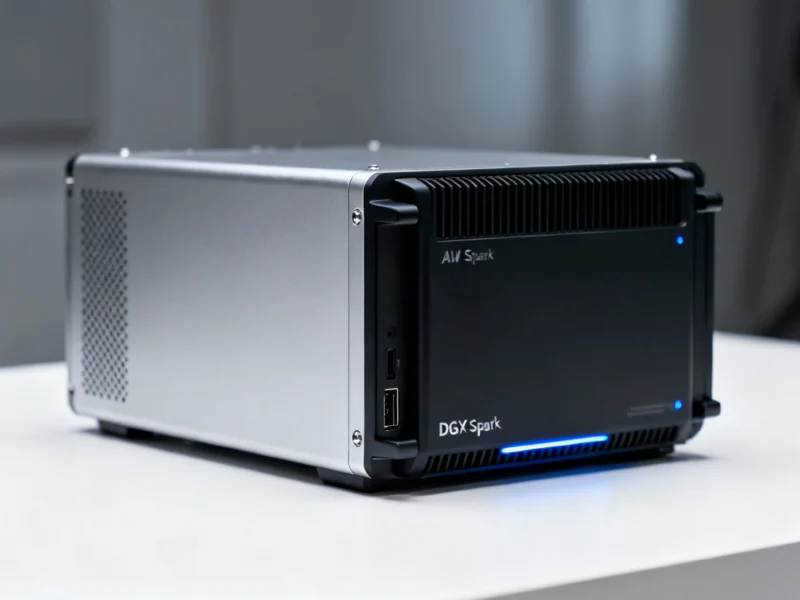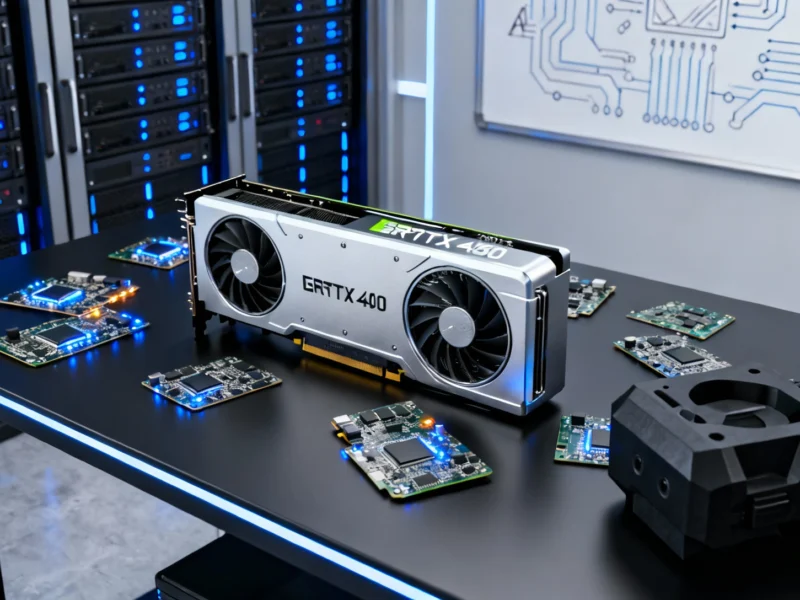Nvidia has made a groundbreaking announcement with the launch of DGX Spark, heralded as “the world’s smallest AI supercomputer.” This revolutionary system represents a significant leap forward in making powerful artificial intelligence computing accessible to developers worldwide, addressing the growing limitations of conventional computing hardware for advanced AI workloads.
Revolutionizing AI Development Accessibility
According to the official Nvidia announcement, DGX Spark is designed to solve a critical challenge facing today’s AI developers: the rapid outgrowing of memory and software capabilities in standard PCs, workstations, and laptops. This limitation has traditionally forced development teams to shift work to cloud environments or local data centers, creating barriers to rapid iteration and innovation.
Jensen Huang, Nvidia’s visionary founder and CEO, emphasized the historical significance of this release. “In 2016, we built DGX-1 to give AI researchers their own supercomputer. I hand-delivered the first system to Elon at a small startup called OpenAI — and from it came ChatGPT, kickstarting the AI revolution,” Huang stated in the announcement. “With DGX Spark, we return to that mission — placing an AI computer in the hands of every developer to ignite the next wave of breakthroughs.”
Unprecedented Performance in Compact Form
The DGX Spark delivers remarkable specifications that challenge conventional expectations of desktop computing. The system provides a full petaflop of AI performance alongside 128GB of unified memory, all contained within a compact desktop form factor. This power enables developers to run inference on AI models with up to 200 billion parameters and fine-tune models of up to 70 billion parameters entirely locally.
Beyond raw computational power, DGX Spark empowers developers to create sophisticated AI agents and run advanced software stacks without relying on external computing resources. This local capability represents a paradigm shift in how artificial intelligence development can approach complex problems, from natural language processing to computer vision applications.
Technical Architecture and Innovation
The engineering behind DGX Spark brings together Nvidia’s comprehensive AI platform into an integrated system optimized for both performance and accessibility. The system is accelerated by an Nvidia GB10 Grace Blackwell Superchip, complemented by Nvidia ConnectX-7 200 Gb/s networking and Nvidia NVLink-C2C technology.
This technical foundation provides five times the bandwidth of fifth-generation PCIe with 128GB of CPU-GPU coherent memory, creating a seamless computing environment for demanding AI workloads. The system’s architecture represents the culmination of years of innovation in high-performance computing, now condensed into a form factor suitable for labs, offices, and development studios.
Complete Software Ecosystem Integration
Nvidia has preinstalled its comprehensive AI software stack on DGX Spark, enabling developers to begin working on projects immediately after setup. The system provides access to the full Nvidia AI ecosystem, including models, libraries, and Nvidia NIM microservices that support diverse local workflows.
Developers can leverage DGX Spark for specialized tasks such as customizing Black Forest Labs’ FLUX.1 models for enhanced image generation, creating vision search and summarization agents using the Nvidia Cosmos Reason vision language model, or building optimized AI chatbots using Qwen3. This integrated approach mirrors the distributed computing principles seen in platforms like Apache Spark, but optimized for AI-specific workloads.
Historical Context and Industry Impact
The launch of DGX Spark continues a legacy that began with the original DGX-1, which Jensen Huang personally delivered to OpenAI in 2016. That system played a crucial role in the development of ChatGPT and the subsequent AI revolution. The symbolic hand-delivery of one of the first DGX Spark units to Elon Musk at SpaceX’s Starbase facility in Texas reinforces this historical connection.
This continuity comes at a time when the AI industry is experiencing rapid evolution, with companies like OpenAI planning adult content allowances and expanding ChatGPT capabilities for verified users. Meanwhile, global technology dynamics continue to shift, as evidenced by changing trade patterns and increasing cybersecurity concerns in the technology sector.
Broad Industry Adoption and Validation
Major technology companies and research organizations are already embracing DGX Spark. Early recipients including Anaconda, Cadence, ComfyUI, Docker, Google, Hugging Face, JetBrains, LM Studio, Meta, Microsoft, Ollama, and Roboflow are actively testing, validating, and optimizing their tools and models for the new platform.
Research institutions worldwide, including the NYU Global Frontier Lab, have previewed DGX Spark, recognizing its potential to accelerate AI research across multiple domains. This widespread industry engagement demonstrates the system’s relevance to diverse AI applications, from scientific research to commercial product development.
Future Implications and Development Potential
The introduction of DGX Spark arrives at a pivotal moment in AI advancement, coinciding with broader technological shifts across multiple fields. As researchers make fundamental discoveries about biological systems, such as dynamic gene boundaries revealed in recent studies, the need for accessible, powerful computing resources becomes increasingly critical.
By placing supercomputer-level performance within reach of individual developers and small teams, Nvidia is potentially catalyzing the next wave of AI innovation. The DGX Spark represents not just a technological achievement but a strategic vision for democratizing advanced AI capabilities, potentially unlocking breakthroughs across industries from healthcare to autonomous systems.
The system’s ability to handle billion-parameter models locally addresses one of the most significant bottlenecks in contemporary AI development, potentially accelerating the pace of innovation while reducing dependency on cloud infrastructure. As developers worldwide gain access to this unprecedented computing power, the boundaries of what’s possible in artificial intelligence continue to expand, setting the stage for transformative applications that could reshape technology and society in the coming years.



